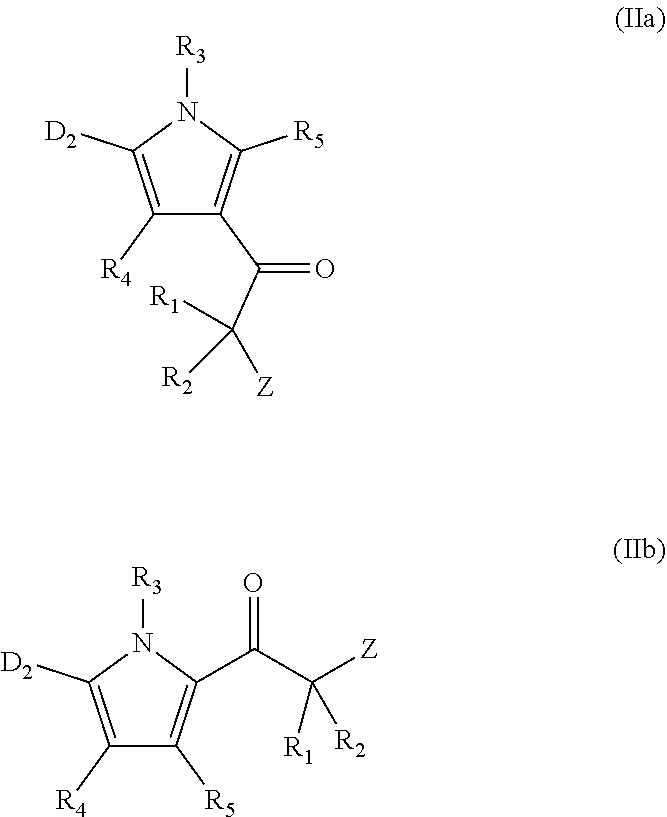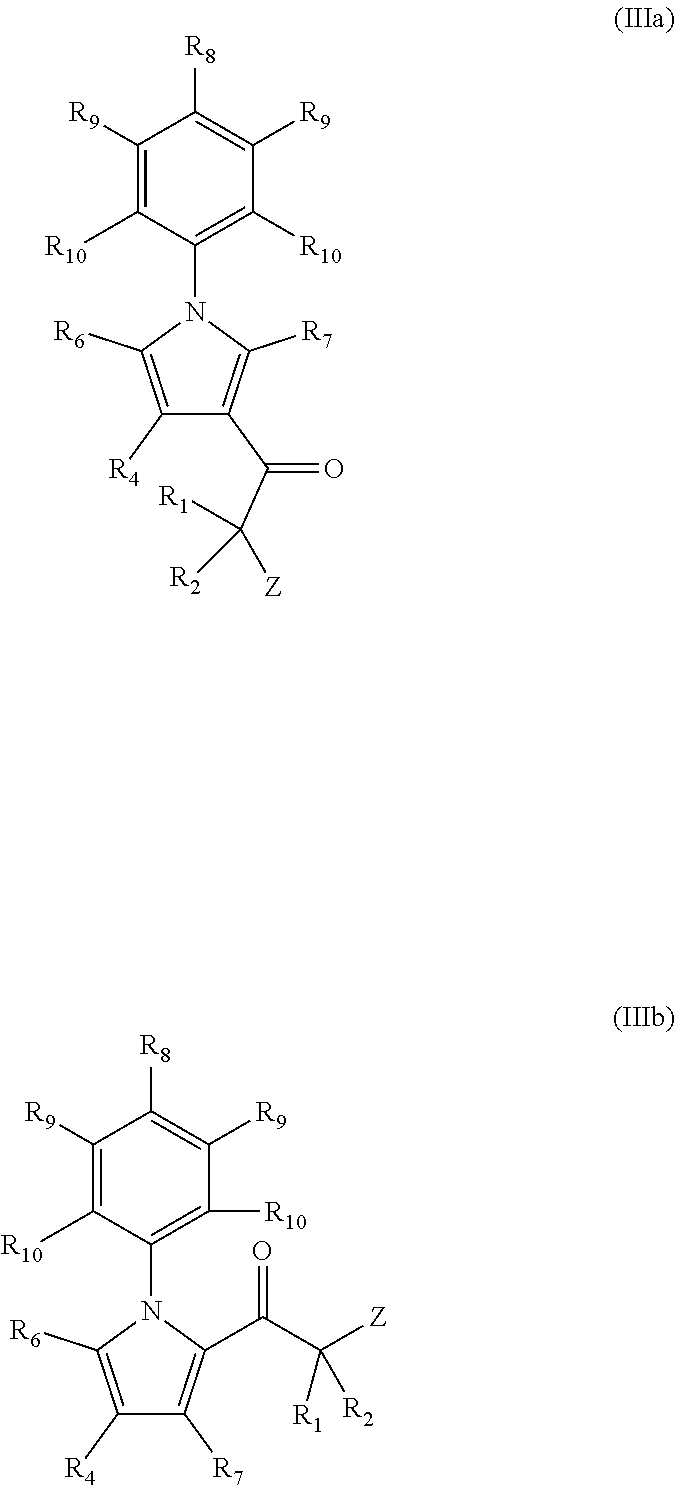Proteasome activity enhancing compounds
a technology of proteasome activity and enhancing compounds, which is applied in the field of proteasome activity enhancing compounds, can solve problems such as the presence of toxic protein aggregates, and achieve the effect of enhancing proteasome activity
- Summary
- Abstract
- Description
- Claims
- Application Information
AI Technical Summary
Benefits of technology
Problems solved by technology
Method used
Image
Examples
examples 1-4
-4-[2,5-Dimethyl-3-(2-piperidin-1-yl-acetyl)-1H-pyrrol-1-yl]-cyclohexanecarboxylate (Compound 120), trans-4-(2,5-Dimethyl-3-(2-(piperidin-1-yl)acetyl)-1H-pyrrol-1-yl)cyclohexane-1-carboxylic acid (Compound 121), trans-4-(2,5-Dimethyl-3-(2-(piperidin-1-yl)acetyl)-1H-pyrrol-1-yl)cyclohexane-1-carboxamide (Compound 122), trans-4-(2,5-Dimethyl-3-(2-(piperidin-1-yl)acetyl)-1H-pyrrol-1-yl)cyclohexane-1-carbonitrile (Compound 143)
[0626]
[0627]Synthesis of trans-4-(2,5-Dimethyl-1H-pyrrol-1-yl)-cyclohexanecarboxylic Acid (II): To a mixture of trans-4-amino-cyclohexanecarboxylic acid (5.00 g, 0.035 mol) in methanol (50 mL), was added 2,5-hexanedione (4.90 mL, 0.042 mol). The reaction mixture was heated at reflux for 3 h and then allowed to cool to room temperature. The reaction mixture was concentrated under vacuum and the remaining residue was diluted with water (50 mL). The mixture was extracted with dichloromethane (2×25 mL) and then the combined organic extracts were washed with water (20 ...
example 5
methyl-3-(2-(piperidin-1-yl)acetyl)-1H-pyrrol-1-yl)benzonitrile (Compound 81)
[0634]
[0635]Synthesis of 4-(2,5-Dimethyl-1H-pyrrol-1-yl)benzonitrile (VI): A mixture of p-aminobenzonitrile (V, 2.00 g, 0.010 mol) and hexane-2,5-dione (5.70 g, 0.050 mol) in acetic acid (30 mL) was heated at reflux for 2 h. After cooling to room temperature, the excess acetic acid was removed under vacuum and the remaining material was then diluted with water. The mixture was extracted with ethyl acetate (3×100 mL) and the combined organic extracts were washed with water and brine. The organic layer was dried over anhydrous sodium sulfate and then concentrated to obtain the crude product mixture. The crude product was purified by column chromatography on (100-200 mesh) silica gel using 2% ethyl acetate in hexanes as the eluant to afford product VI (3.00 g, 97%) as a white solid. 1H NMR (400 MHz, CDCl3): δ 7.76 (d, J=8.4 Hz, 2H), 7.34 (d, J=8.4 Hz, 2H), 5.93 (s, 2H), 2.03 (s, 6H).
[0636]Synthesis of 4-(3-(2-...
example 6
ibition Assay
[0639]Using previously described methodology [B. H. Lee et al. Nature 2010, 467 (9), 179, the contents of which are expressly incorporated by reference herein], select compounds described herein were found to inhibit USP14 as delineated in Table 5. “I” in the Table below designates an IC50 of >5 μM, “II” in the Table below designates and IC50 between 0.5 and 5 μM, and “III” designates an IC5050 values in the Table below represent the average value from a minimum of two experimental determinations.
TABLE 5CompoundIC50No.Chemical StructureCategory 1I 2I 3I 4I 5I 7I 8I 9I 10I 11I 12I 13I 14I 15I 16I 17I 18I 19I 20I 21I 22I 23I 24I 25I 26I 27I 28I 29I 32I 33I 35I 36I 37I 38I 39I 40I 41I 42I 43I 44I 45I 46I 48II 49II 50II 51II 52II 53II 54II 55II 56II 57II 58II 59II 60II 61II 62II 63II 64II 65II 66II 67II 68II 69II 70II 71II 72II 73II 74II 75II 76II 77II 79III 80III 81III 82III 83III 84III 85III89A and 89BIII, III 90III 91III 92III 93III 94III 95III 96III 97III 99III100I101I1...
PUM
 Login to View More
Login to View More Abstract
Description
Claims
Application Information
 Login to View More
Login to View More - R&D Engineer
- R&D Manager
- IP Professional
- Industry Leading Data Capabilities
- Powerful AI technology
- Patent DNA Extraction
Browse by: Latest US Patents, China's latest patents, Technical Efficacy Thesaurus, Application Domain, Technology Topic, Popular Technical Reports.
© 2024 PatSnap. All rights reserved.Legal|Privacy policy|Modern Slavery Act Transparency Statement|Sitemap|About US| Contact US: help@patsnap.com










